Basic rules for planting tomatoes in a 3x6 greenhouse
Not every gardener is able to grow high-quality and powerful tomato seedlings. Indeed, in addition to proper care, proper organization of space is required. Thanks to this, yield does not suffer, and maintenance becomes easier. Consider what the correct scheme for planting tomatoes in a 3x6 greenhouse looks like.
The device of the beds
The device of greenhouse beds has certain features. Let's consider the most common:
- the greenhouse must be placed in a well-lit and open place;
- the long side should be placed from the east side to the west;
- the beds must be located on the long side;
- height of greenhouse beds - no more than 30 - 40 cm;
- width of greenhouse beds - 60 - 65 cm;
- passage - no more than 45 - 50 cm.
Standard and undersized varieties are ideally planted in a greenhouse or greenhouse. In the manufacture of a 3 x 6 greenhouse, 2 beds and 1 aisle or 3 beds with 2 longitudinal passes are built.
The central bed is designed for planting tall varieties, and the outer ones are used for undersized and dwarf ones. This combination of plants is perfect for planting tomatoes in a greenhouse.
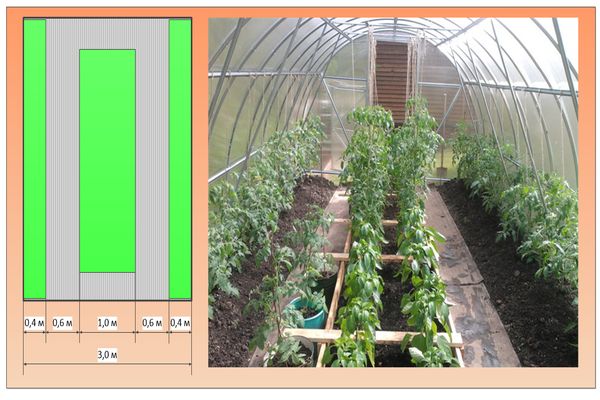
Of course, the layout depends only on the gardener himself. To make it more convenient to care for the outer bushes, it is necessary to create a small bed. The passage allows you to easily walk around the territory without touching the plants.
In order for tomatoes to develop well, grow and give a good harvest, it is necessary to provide them with enough space. Tomatoes should not grow in cramped conditions - this will negatively affect the harvest. If there are extra seedlings, it is better to plant them elsewhere.
Features of placement in a greenhouse
It is important to pay attention to the organization of a comfortable microclimate in a polycarbonate greenhouse. One of the favorable conditions for growing is the correct planting of tomatoes in the greenhouse area, so that the bushes are fully provided with light and oxygen.
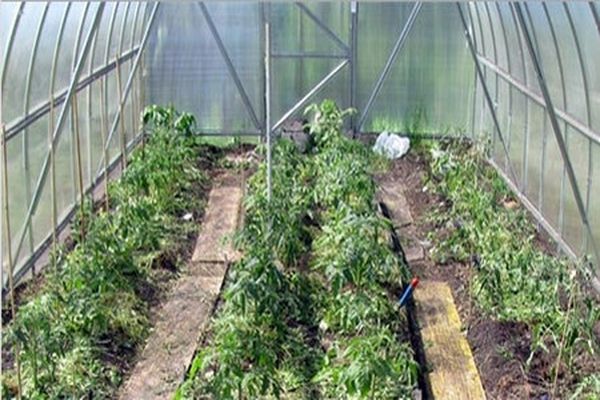
With proper planting, tomatoes will not lack nutrients entering the soil - this will allow them to grow normally, develop and give good fruits. If you want to reap a good harvest, you need to plant them correctly and take good care of them.
There are three placement options (the choice must be made, focusing on the tomato variety):
- The traditional scheme is used for early maturing varieties. The distance between the rows should be 0.7 m, and between the bushes - 0.5 m.
- Ribbon - characterized by staggered plants. The distance between the bushes is 0.5 m.
- The combined scheme is used for growing different varieties.Low ones are located along the walls (at a distance of 0.3–0.4 m from each other), and high ones are planted at the aisle (at a distance of 0.5–0.6 m).
The greenhouse is placed from east to west - this will provide the necessary lighting.
It is important to know how many tomatoes can be placed in a 3x6 room:
- undersized varieties - planted about 200 pieces, 2 bushes in one hole;
- medium-sized varieties - about 40 are planted;
- tall varieties - planted about 30 pieces, in a checkerboard pattern;
- very large varieties - they are placed in one line for 10 - 14 pieces.
If several different types of varieties are planted, it is necessary to calculate the optimal number of planting material in the greenhouse so that the error does not affect the yield.
What affects placement
As a rule, gardeners plant several varieties of tomatoes in the greenhouse. However, some other criteria also affect the scheme:
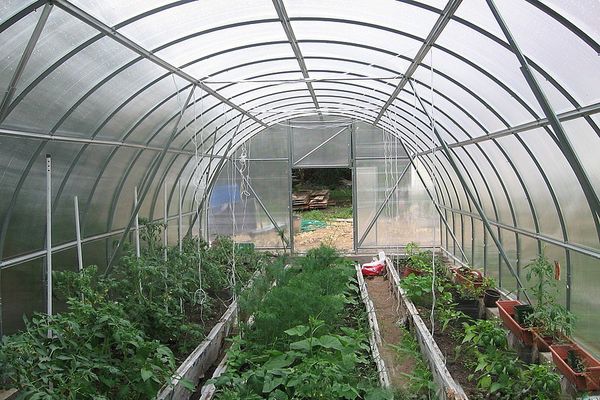
- The direction of the wind affects the temperature regulation and the presence of drafts in the room. So, tomatoes with poor resistance to temperature extremes are best planted against the walls of the greenhouse.
- Lighting. There are varieties that need a lot of light. They must be placed on the sunny side.
- A combination of different varieties. In a small space, it is more profitable to plant tomatoes with a variety of characteristics. For example, you can combine light-loving varieties with shade-tolerant ones.
- The level of livability is an important factor in choosing an accommodation option. This includes the location of greenhouse beds, the arrangement of the irrigation system, lighting, heating and ventilation.
Planting scheme of different varieties
When a comfortable microclimate is provided in the greenhouse, you should pay attention to the planting pattern to harvest a good harvest.
The correct placement of plants will provide the necessary level of light, moisture and nutrients.
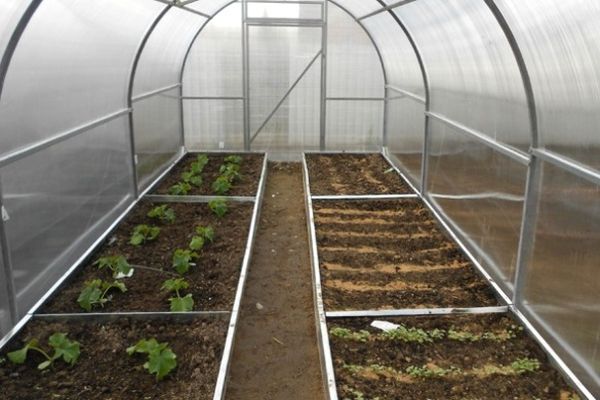
For greenhouses 3x6 make 2 beds with one pass:
- Standard, undersized, dwarf tomatoes are planted in three lines, one or two bushes per hole. The distance between the holes should be about 0.3 - 0.4 meters. In the first case, 200 bushes are planted, and in the second - 180.
- Hybrid and medium-sized varieties should be placed in two lines on the greenhouse bed. The distance between the bushes is about 0.4 - 0.5 meters. The number of plants is 40 in one line.
- Indeterminate and tall varieties are planted in a checkerboard pattern. To do this, make two lines on the greenhouse bed. The number of tomatoes is 30 - 32 pieces.
- Sprawling and especially large varieties are planted in one line of 10 - 12 bushes.
First of all, the placement of plants directly depends on the varieties planted:
- undersized - 60 cm between lines and 40 cm - from bush to bush;
- tall - 70 cm row spacing and 50 cm - the distance from one hole to another.
For easy maintenance, be sure to leave a path that separates the lines. Its width should be 0.1 m. Pay attention to the way the greenhouse bush is formed. For one stem, the distance should be 0.2 - 0.3 m, for two, planted in one hole, - 0.35 - 0.4 m.The scheme should be carried out with a distance of 80 cm, and between greenhouse beds - 1 m Holes for low-growing varieties should be 20 cm, and for tall ones - 30 cm.
For planting tomatoes, as a rule, use a greenhouse 50 cm above the bush. This will create favorable conditions for the correct development of tomatoes and fruit ripening.
Competent organization of the space in the greenhouse will allow you to get a high-quality and bountiful harvest. The main thing is that the plants do not crowd each other and can develop correctly. By following the simple rules for plant placement, you can easily get wonderful tomatoes.
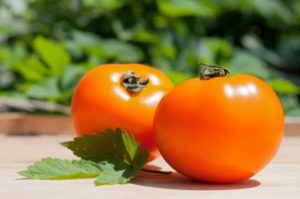
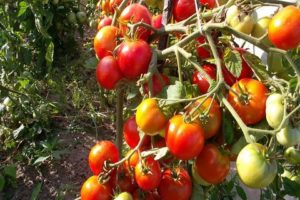
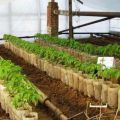



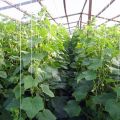
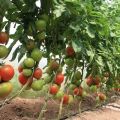

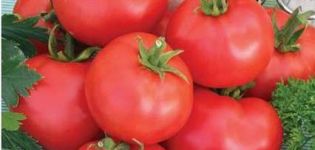
Any variety of tomatoes, in order to grow quickly and develop well, requires high-quality feeding. For these cases, I use BioGrow, and noticed that tomatoes of any variety have a powerful trunk, grow faster and yield much higher than if I had not fed them with anything. Proper planting, systematic care and regular feeding are all factors that contribute to a good yield.